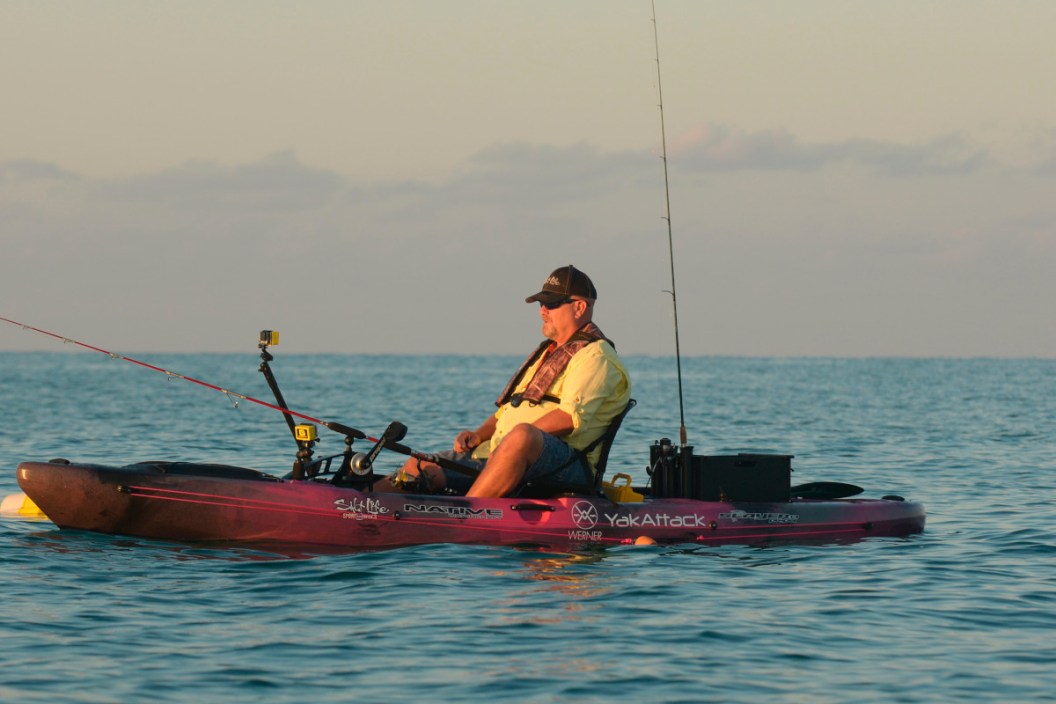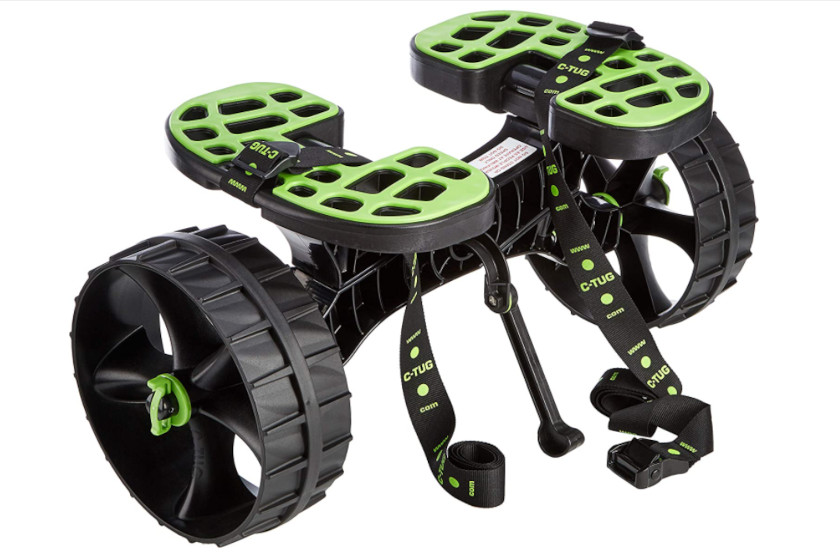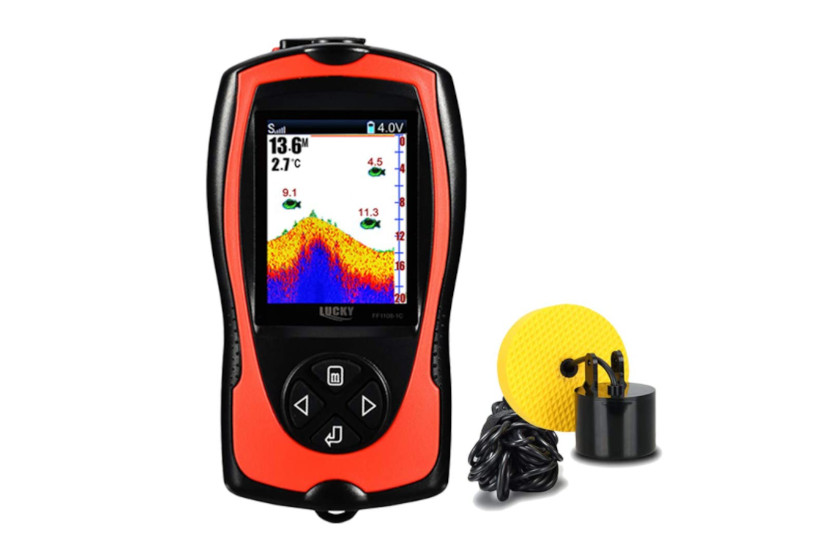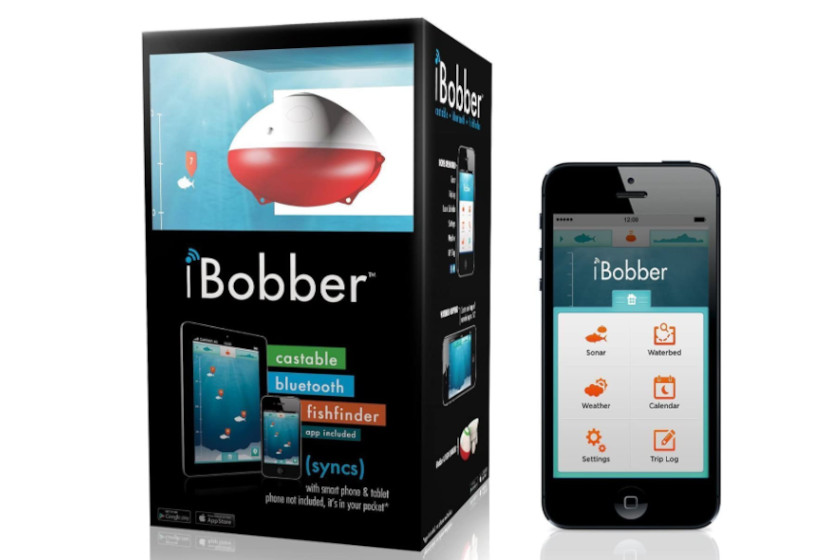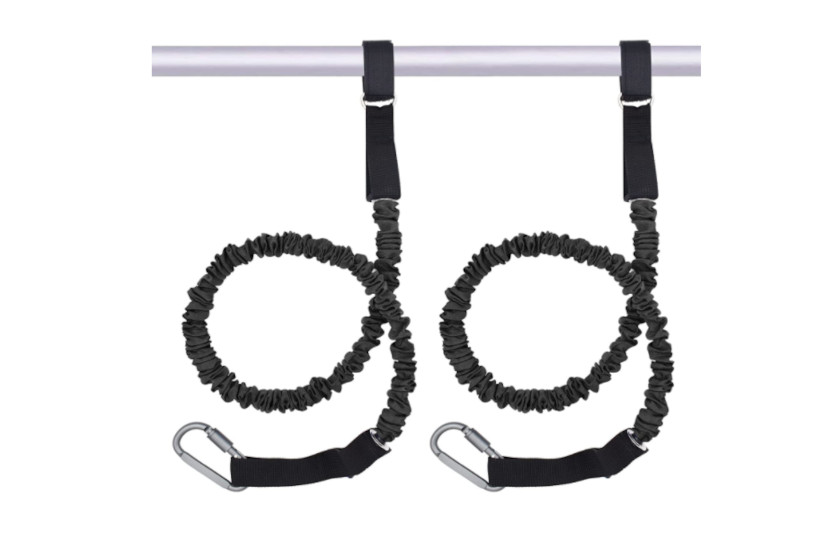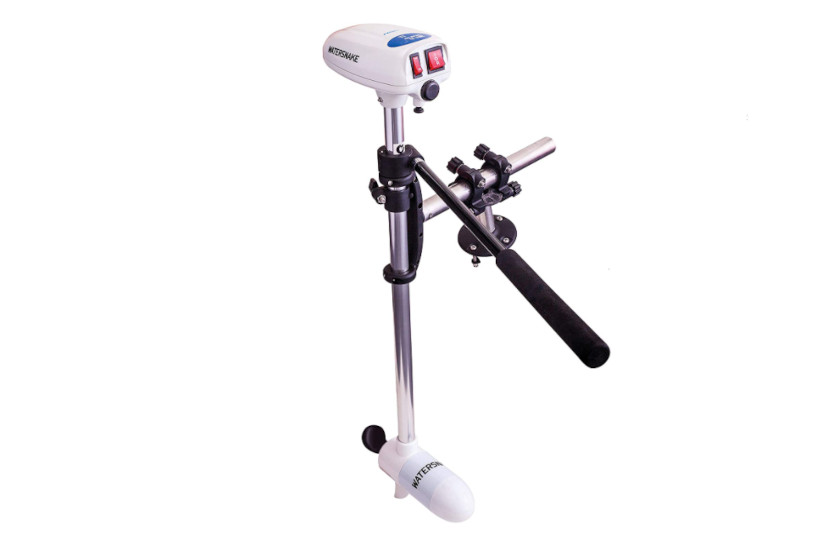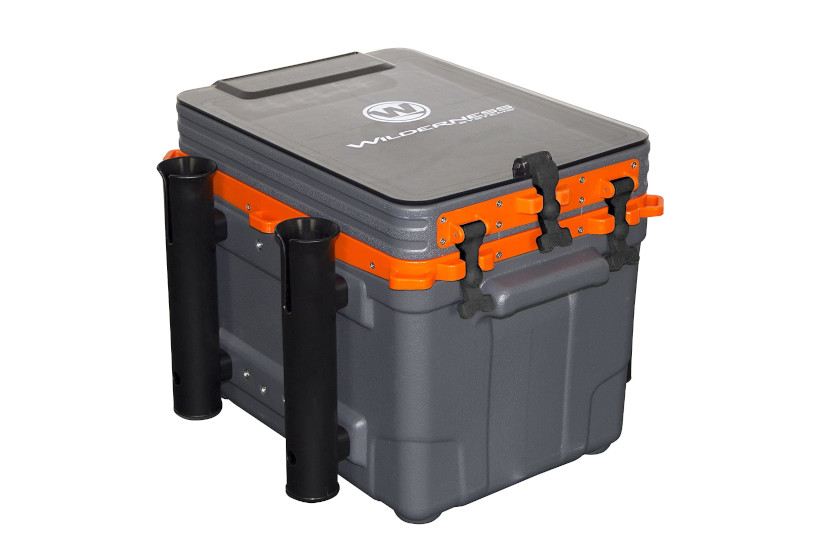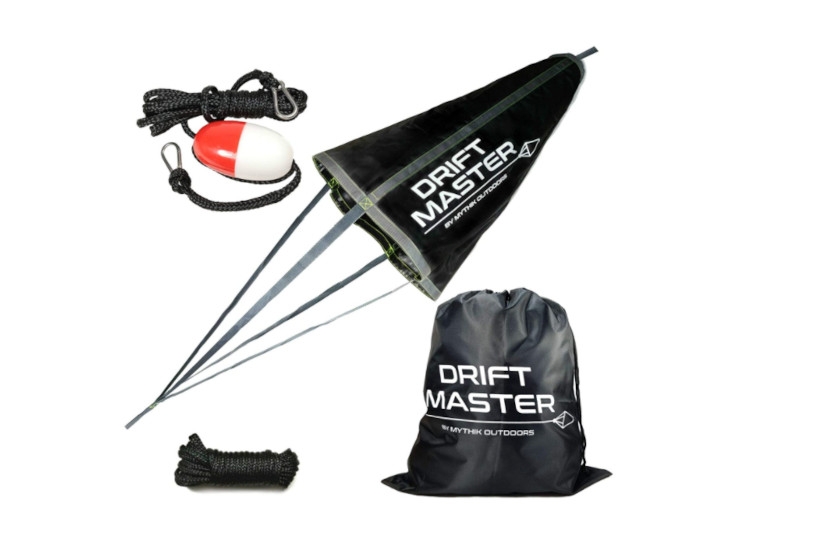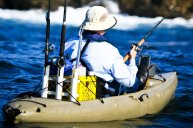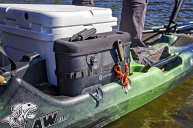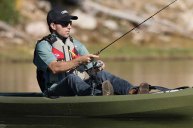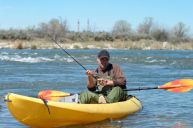These are the kayak fishing accessories you'll need for paddle fishing.
More and more anglers are discovering the benefits of kayak fishing these days. The shallow draft and compact nature of kayaks allows them to get back into secret honey holes that the larger boats simply cannot reach. There's something about battling a big fish in such a small craft that can re-invigorate a love of fishing in someone who's gotten bored with the old ways. Plus, they're much more affordable and easier to store than a large fishing boat that comes with tons of extra expenses like a trailer, insurance, and registration fees. Modern angling kayaks have become so advanced, some anglers will even use them for saltwater trolling.
The only problem is the condensed space inside of a kayak. It makes it considerably harder to stow away your fishing rod, tackle box, lures, and other fishing tools in such a confined space. In the past this has forced kayakers either to make hard choices on what vital gear to leave behind, or to come up with complicated DIY-style solutions to solve the storage problems.
Fortunately, kayaks have become more popular, and manufacturers are starting to build kayak fishing gear specifically with paddlers in mind. It's now easy to either buy a kayak that's already fully decked out, or to customize a bare bones model into the ultimate fishing machine. Today we're talking more about the latter. We're going to go over the right kayak accessories to consider for your craft to keep yourself organized and to have the best fishing experience possible.
Products featured on Wide Open Spaces are independently selected by our editors. However, when you buy something through our links, we may earn a commission.
Kayak Cart
I'm going to start off with this since I've seen far too many kayak anglers slowly destroy the hull of their boat by dragging it on the ground at the beginning or end of a long day on the water. I learned the hard way that eventually this will wear a hole in even the toughest of plastic kayaks. Many people drag them because it's rather awkward to carry a 50- to 70-pound kayak from your vehicle to the water's edge. There are tons of options. It doesn't have to be an expensive one. Just some sort of compact cart or trolley that makes it easier to get your kayak into the water. Trust me, you'll be thankful you have one once your buddy starts complaining that his or her kayak is leaking from being dragged across the ground.
Fishing rod holders
We've already done a full guide on kayak rod holders, so we won't go into too much detail here. However, quality rod holders can make or break a fishing trip. You want them to be rugged, easy to operate, and easy to place a rod in or remove it from, especially when the holders are located behind you. It also depends on the style of kayak. Flush mounted rod holders are usually just for sit-in styles, while sit-on-top kayaks are better suited for holders with a mounted, swiveling base. Consider also the types of reels you'll be using and the style of fishing when choosing a rod holder. Some holders are specifically suited for fly fishing, if that's what you're into.
Fish Finders
Just because you have a small craft does not mean you need to go out fishing blind. Many manufacturers are now producing, small, portable fish finders with transducers that can be used literally anywhere to locate fish. These finders are usually handheld like the Lucky portable finder above, or they're compact enough to mount in a bracket on your kayak in a place where they're not going to get in the way when fighting or landing a fish.
Some finders, like the iBobber Wireless, don't even require a separate display unit. This one connects directly to your smart phone to show you what's hiding beneath the water's surface. The other nice thing about electronics made for kayakers is that they're cheap. You can often find a unit for under $100 if you catch a sale at the right time.
Paddle holder/Paddle leash
These are two separate things, but both serve important purposes. A quality paddle holder will keep your paddle out of the way when you are trying to fish. These are especially important with a pedal kayak, because you probably don't want your paddle across your lap when you're trying to fish. Paddle leashes are a good idea for navigating rough waters whether you're fishing or not. They're usually thought of as a saltwater fishing accessory, but they're great for freshwater too. The Great Lakes and some rivers can be rough. The last thing you want to do is lose an expensive kayak paddle.
Trolling motors
One of the great things about kayaks is the plethora of ways to power them. You can do it by hand with paddles, with your feet using a pedal system, or you can attach a small motor. Most kayaks are easily powered with a small trolling motor like the one above. It doesn't take much to propel a kayak, which means you don't need to break the bank when purchasing a motor for one either. One of these can really extend your day of fishing and take you further from the launch point than you'd wander normally. The only considerations to keep in mind are where the battery will be stored and the legality of a "motorboat." Most states do not require registration for kayaks. However, for most it's required the second you attach a motor, even if it's just a simple electric one.
Coolers and tackle boxes
Again, we won't go into too much detail on these items because we have separate guides for both coolers and tackle boxes. We will note that most anglers are going to need a cooler or tackle box built specifically for kayaking. Many are meant to fit into the cargo areas of the best kayaks on the market. When it comes to holding your gear, milk crate tackle systems are especially popular. Man of these tackle boxes also include rod holders, plus places to stow a fishing net, fishing pliers, and other small tools for easy access when you need them.
Anchors and drift socks
Technically, you do not necessarily need a kayak anchor. In fact, some forms of fishing are better without one. However, there are some circumstances where you'll want to hang around an area for a while without getting pushed off that perfect spot where the fish are holding. Fortunately, there are plenty of kayak anchors on the market and most are highly affordable. They're also light, usually coming in under the four-pound mark. They'll last you years of fishing adventures. Another popular option for kayaks is a drift sock, which allows you to slowly troll an area with minimal effort on your part.
For more outdoor content from Travis Smola, be sure to follow him on Twitter and Instagram For original videos, check out his Geocaching and Outdoors with Travis YouTube channels.
